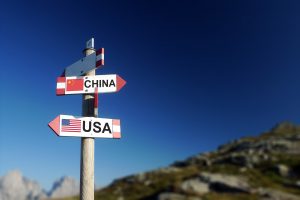
China’s Finance Ministry said that it will cut import tariffs on some vehicles to 15 percent, down from as much as 25 percent.
The announcement Tuesday also said that tariffs on some automotive parts would fall to 6 percent. The cuts will be effective from July 1.
The move signifies an attempt to open up the world’s largest auto market to international players. Discussion of a potential automotive sector tariff cut surfaced in April, and was mentioned in a speech by Chinese President Xi Jinping that month. It was also revealed that China would permit full foreign ownership of car makers in five years.
According to the Finance Ministry on Tuesday, the average tax on qualifying vehicles will now be 13.8 percent. Car parts to have import duties lowered include bumpers, doors and seat belts.
The European automotive sector was trading up just over 0.7 percent Tuesday morning, with German parts maker Schaeffler leading the way. Higher-end car makers could stand to benefit from the decision, given that less production for these models has shifted to China. Toyota’s Lexus could do well, given it currently does not make its cars in China and has not announced any plans to move manufacturing into the country.

BMW could also gain from the tariff cut. Previous analysis had suggested that the German auto maker would be hit by China’s implementation of import tariffs against the U.S. last month given that it builds a significant amount of its cars in the U.S. and then ships them to China.
The levy reduction sends “a strong signal that China will continue to open up,” a spokesperson for BMW said in a statement. “This will certainly benefit the customer and boost the market to an even more dynamic level,” it added. BMW also said that it would review its pricing in response to the news.
Meanwhile, a spokesperson for U.S. carmaker Ford said that the firm welcomed China’s announcement.
Chinese car imports rose 16.8 percent year-on-year in 2017, according to state-run news agency Xinhua in February, citing the China Automobile Dealers Association. Around 1.21 million vehicles were brought into the country.

A trade rapprochement?
Tension over a potential trade war between China and the United States has eased in recent days following talks between top officials.
Over the weekend Vice Premier Liu He met with Treasury Secretary Steven Mnuchin and Commerce Secretary Wilbur Ross among others in Washington, discussing how China could buy more agricultural and energy products from the U.S. to ease the trade deficit.
President Donald Trump tweeted that China had “agreed” to buy “massive amounts” of additional agricultural commodities, calling the news “one of the best things to happen to our farmers in many years.”
The meeting also yielded wins for China, with news that previously planned U.S. duties on Chinese imports, which threatened $50 billion-worth of trade, had been suspended. It has also been reported that the two countries are close to securing a deal on Chinese software firm ZTE, which had been banned from selling in the U.S. due to its violation of American sanctions on Iran and North Korea.
In an interview with CNBC Monday, Mnuchin said that “meaningful progress” had been made with China. “This has been a trade dispute all along, it never was a trade war,” he added.

